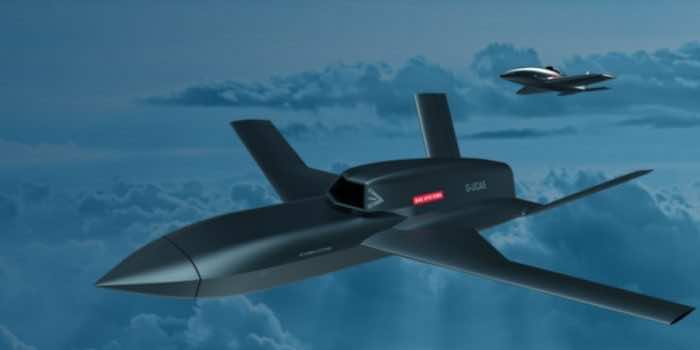According to an organizational press release, the Defense contractor BAE Systems has revealed the designs of two new drone systems at the Royal International Air Tattoo (RAIT), the Royal Air Force’s annual air show event.
BAE’s new drone designs meet the militaries’ requirements where they are looking for drones that work with the latest technologies and offer a mix of capabilities, paving the way for a customized deployment in line with the requirements of the mission at the forefront.
BAE Systems has not given these drones any specific brand names and continues to call them Concepts.

Smaller among the two designs which have been announced so far, Concept 1 has been dubbed as an “expendable drone” but is also designed to be recovered easily. This twin-tailed drone has a fuselage like a bullet and has an air intake placed on the top rear portion, suggesting that is powered by a jet engine.
According to the brochure released by the company, the drone can fly at speeds up to 0.5 Mach and has a service height of 30,000 feet (9,144 m). Launched from a rail-type catapult, the drone does not need a runway to be deployed and is recovered using a parachute and kept in its containerized storage system. When in the air, the drone can carry a maximum payload of 88 pounds (40 kg) and stay in the air for up to four hours.
BAE’s second design provides the advantages of containerized storage but also follows a more conventional launch and recovery approach by using the runway. Constructed in a modular fashion, the drone has a maximum service altitude of 40,000 feet (12,192 m) and boasts a cruise speed of 0.75 Mach. With its internal payload capacity of 1,100 pounds (500 kg), the Concept 2 can fly for up to five hours.
They both can be deployed for ISR missions.

Both the drones are also capable of engaging in electronic warfare by carrying payloads that can work to jam radio signals while also being equipped with technology that enables them to either solo or as part of the swarm.
BAE’s claim of “goal-based autonomy” on these systems means that drones can carry out specific tasks needed to achieve mission goals without requiring further human input. This ability assumes importance as BAE Systems is also involved in the development of the sixth-generation air combat systems for the UK.


